After the body of the Somerton Man was found on an Australian beach in December 1948, police found a scrap of paper reading "Tamám Shud" in his pocket.
On December 1, 1948, beachgoers came across a dead man on Australia’s Somerton beach. Well-dressed and with no signs of trauma, his identity and cause of death eluded local police. Soon, investigators dubbed him the “Somerton Man.”
As their investigation deepened, so did the mystery. Not only did the man’s possessions offer few clues, but investigators also found a slip of paper in the man’s pocket which read “Tamám Shud,” Persian for, “it is finished.”
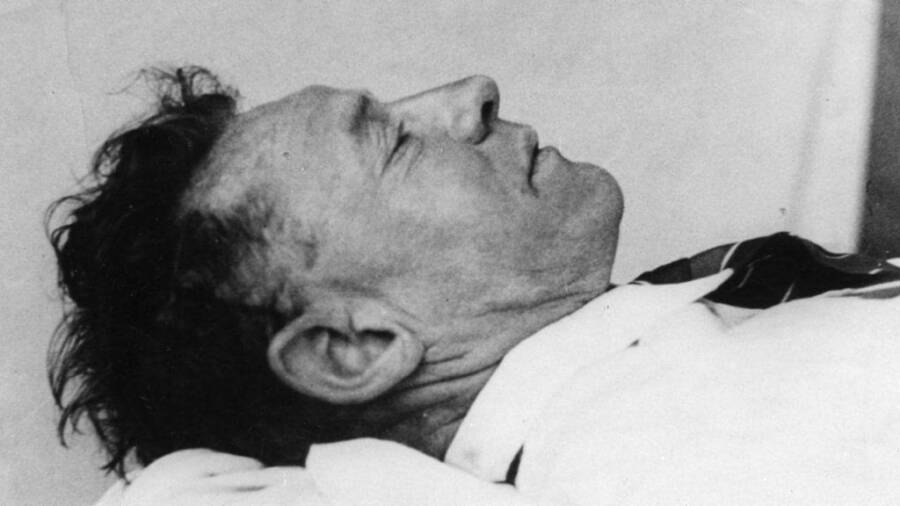
Public DomainMortuary photograph of the Somerton Man, the victim at the heart of the Tamám Shud case, taken on December 1948.
To date, the Somerton Man has never been officially identified. But several theories have emerged in the past few decades, suggesting that the mysterious figure could have been anything from a spy to a spurned lover.
And after more than 70 years, some investigators have new reasons to hope that the Somerton Man might finally be identified and that the Tamám Shud case might be solved once and for all. The biggest development involves one professor who claims that his DNA analysis has actually identified the Somerton Man.
However, even if do know who he was, that leaves scores of unanswered questions in this decades-old cold case.

The Disturbing Discovery Of The Somerton Man
On the evening of November 30, 1948, a number of people noticed a man propped up against a concrete seawall on Somerton beach in Adelaide. His legs were outstretched and his feet were serenely crossed.
He struck many as odd. For one, he wore a full suit and polished shoes — bizarre beach attire for a warm evening. One couple remembers him raising his arm as if drunkenly trying to light a cigarette. Another recalls seeing mosquitos buzzing around his face and thinking that he was too drunk to wave them away.
They each believed that the man had had too much to drink. In fact, he was dying. A pair of amateur jockeys on horseback came across his body the next day and alerted the police.
An initial inspection of the Somerton Man — as he came to be known — revealed no obvious cause of death. The clean-shaven man had not been stabbed, shot, or, it seemed, injured at all.

Public DomainThe Somerton Man was carrying no identifying materials and all of the tags in his clothes had been carefully removed, leaving investigators utterly perplexed.
He had on boxer shorts and a men’s singlet, a white shirt, and a thin red tie. He wore light brown trousers, a brown sweater, and a brown double-breasted coat. His shoes were polished. One of his pants pockets was repaired with an unusual type of orange thread.
In his pockets, investigators found a railway ticket to Henley Beach, a bus ticket to North Glenelg, an American metal comb, a packet of Juicy Fruit chewing gum, a packet of Army Club cigarettes containing a different brand of cigarettes, a handkerchief, and a packet of Bryant & May matches.
The man had athletic legs and seemed to be in his 40s or 50s. His forearms were tanned. His toes were oddly mangled as though they had been shoved into tight shoes, suggesting, perhaps, that he’d been a dancer.
Strangely, the tags and labels of the Somerton Man’s clothes had been cut off. And investigators found no money, wallet, or identification on his person.
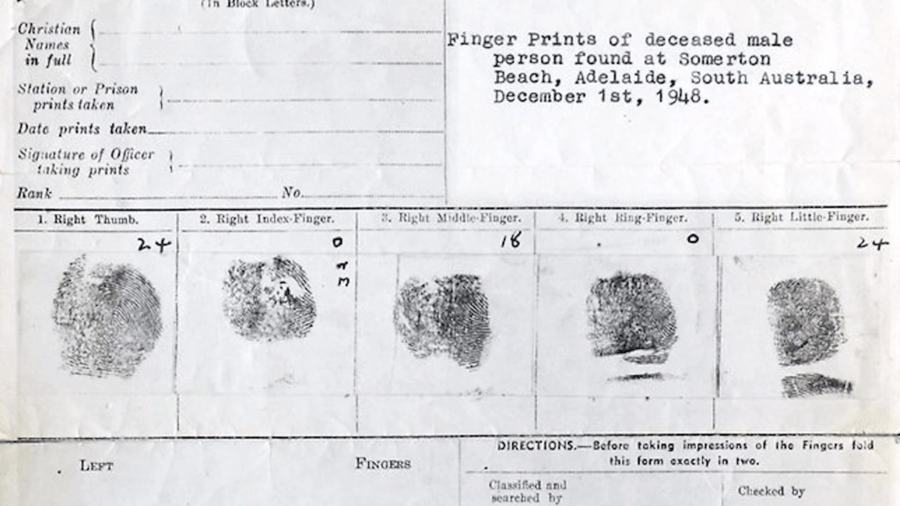
YouTube/Unexplained MysteriesThe fingerprints of the Somerton Man, taken on December 1, 1948.
At the Royal Adelaide Hospital, Dr. John Barkley Bennet estimated that time of death was to be no earlier than 2 a.m. The attending pathologist, John Matthew Dwyer, determined that the body had not been moved after death.
Dwyer also noted a couple of irregularities. The man’s pupils seemed small and unusually shaped. The Somerton Man also had blood in his stomach, which suggested to Dwyer the presence of “some irritant poison.”
But subsequent tests found no poison in the man’s blood. This has led some investigators to believe that the man either digested digitalis and strophanthin, two lethal poisons that don’t leave a trace.
Further attempts to identify the man failed. Neither the FBI nor Scotland Yard had the fingerprints on file. And although coroners determined that the Somerton Man had died of heart failure, they couldn’t come up with a cause of death.
Police did manage to find the man’s abandoned suitcase at the Adelaide Railway Station. It contained the exact same unusual orange thread sewn into the Somerton Man’s pants, and some clothing labeled “T. Keane” or “T. Kean.” This, however, yielded no leads.

YouTube/Unexplained MysteriesThe police found the dead man’s suitcase at the Adelaide Railway Station on November 30, 1949.
The most baffling clue of all, however, came several months later. A renewed search of the Somerton Man’s possessions revealed a small pocket sewn into the waistband of his pants. There, investigators found a folded piece of paper that read “Tamám Shud” — Persian for “it’s finished” or “it’s ended.”
The words were written in a distinctive script and were found to have been torn from a rare New Zealand edition of The Rubaiyat of Omar Khayyam, a 12th-century work of poetry.
The Enduring Mystery Behind “Tamám Shud”
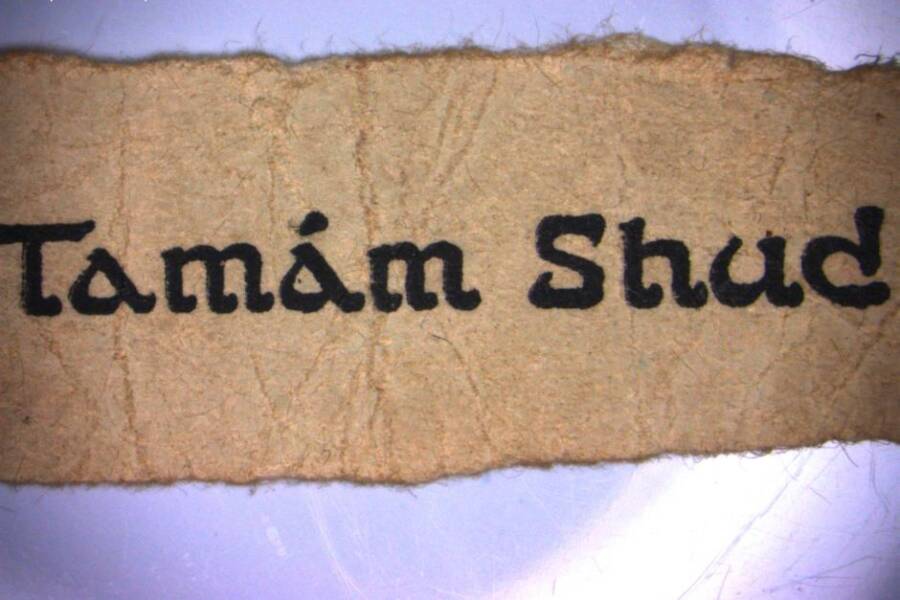
Public DomainThe scrap of paper discovered in a concealed pocket in the dead man’s trousers. “Tamám shud” is a Persian phrase, meaning “It is ended.”
Police searched far and wide for a copy of The Rubaiyat of Omar Khayyam that matched the distinctive font from the “Tamám Shud” paper. They couldn’t find it anywhere until a man came to the police station with a copy.
To the excitement of the police, the last page of the book — the part containing “Tamám Shud” — had been ripped out. But the man who brought the book in claimed that he knew nothing about the poems or the Somerton Man.
In December of the previous year, he reported, he had taken a drive with his brother-in-law and parked a few hundred yards away from Somerton beach.
When they returned to the car, his brother-in-law noticed a copy of The Rubaiyat of Omar Khayyam on the floor. Both men had assumed the book belonged to the other.
But when the national coverage of the Somerton Man had begun to circulate, the two men took a closer look at the book and realized it was the one police were looking for.
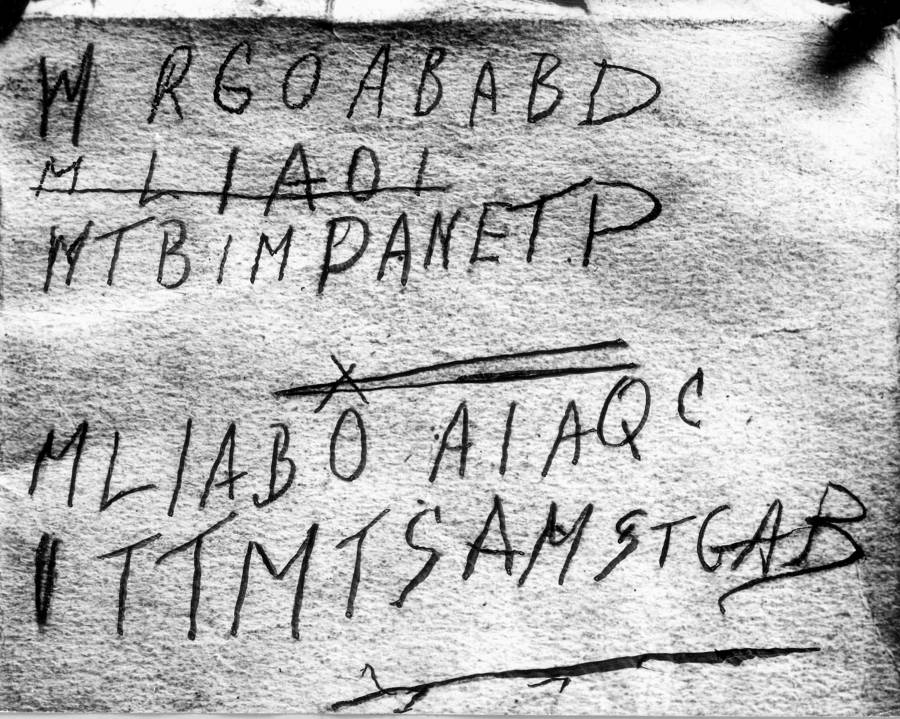
Wikimedia CommonsA police scan of the handwritten code found in the back of a copy of The Rubiayat of Omar Khayyam, in which the words “Tamám Shud” also appear. It is believed to have belonged to the Somerton Man.
Inside the book, Detective Sergeant Lionel Leane found two unlisted phone numbers and faint lines of code. The first phone number was a dead end, but the second phone number led to a young nurse named Jessica Ellen “Jo” Thomson who lived on Somerton Beach.
Thomson was reluctant to speak to the police, though she eventually admitted to having gifted a copy of it to a man named Alfred Boxall. When the Adelaide police pursued this lead, they discovered that Boxall was still alive — and had Thomson’s copy in his possession.
Though Thomson claimed that she didn’t know the Somerton Man, police reported that she reacted strangely to seeing a plaster cast of his face, and almost fainted.
With that lead seemingly exhausted, police next turned to the faint code in the book. Under a black light, they could make out a strange jumble of letters which read:
W [or maybe M] RGOABABDWTBIMPANETP
MLIABO AIAIQC
ITTMTSAMSTGAB
But not even Naval Intelligence in Australia could crack the code.
Lacking more leads to pursue, the police lay the Somerton Man to rest on June 14, 1949.
When the South Australia coroner published the final results of his investigation in 1958, his report concluded with the admission: “I am unable to say who the deceased was…I am unable to say how he died or what was the cause of death.”
It seemed that the mystery would never be solved.
New Hope For Solving The Tamám Shud Case And Identifying The Somerton Man
In recent years, several theories have emerged about Somerton Man and what happened to him on the beach.
The first popular theory was that the Somerton Man killed himself after being rejected by Jessica Ellen Thomson. Some have suggested that Thomson — who died in 2013 — actually had a son with the Somerton Man, due to similarities in their appearance. Rejected from their lives, perhaps the Somerton Man decided to end it all.
This makes sense for a number of reasons. One, the Somerton Man had no defensive wounds. Two, the “Tamán Shud” note seems to connect him to Thomson since she gave out the book as gifts.
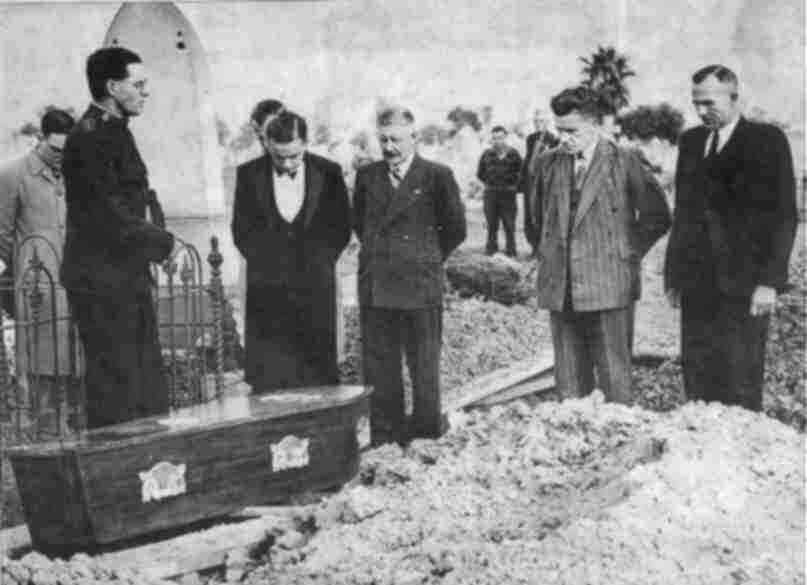
Wikimedia CommonsThe Somerton Man being buried on June 14, 1949. By his grave site is Salvation Army Captain Em Webb, who is leading prayers.
The more provocative theory, however, is that the Somerton Man was a spy that knew too much. His death struck many investigators as highly unusual — especially if he was indeed killed by deadly poisons that disappear.
Supporting this theory is the fact that no one came to claim the body despite publicity around the case. Plus, the indecipherable code and confounding nature of the meaning of “Tamám Shud” seem like something out of a spy novel.
Weirder clues have also been found since the Somerton Man was laid to rest. Retired Australian policeman Gerry Feltus, who wrote the the only book yet published on the case, discovered a witness in 1950 who said they had seen one man carrying another on his shoulder on the night of November 30, 1948.
Could that have been one drunk friend helping another? Or the Somerton Man’s killer, finishing the job?
The investigation has also since been picked up by Thomson’s own daughters. They suggest that they could be related to the Somerton Man, and that both he and their mother could have been involved in a Soviet spy ring.
Meanwhile, more concrete developments came in the form of a July 2022 announcement from University of Adelaide professor Derek Abbott. His DNA research using traces of hair found among the original evidence suggest that the Somerton Man was a local engineer named Carl “Charles” Webb.

But although Abbott and company theorize that Webb may have come to South Australia to track down his estranged wife, little remains known about the wealth of other disturbing details that surround this case.
For now, the mystery of the Tamám Shud case and the Somerton Man remains nearly as chilling as they were more than 70 years ago.
After reading about the Tamám Shud case and the Somerton Man, check out the case of the Isdal woman. Then, read up on seven chilling cold cases where both the murderer and victim are still unknown.





